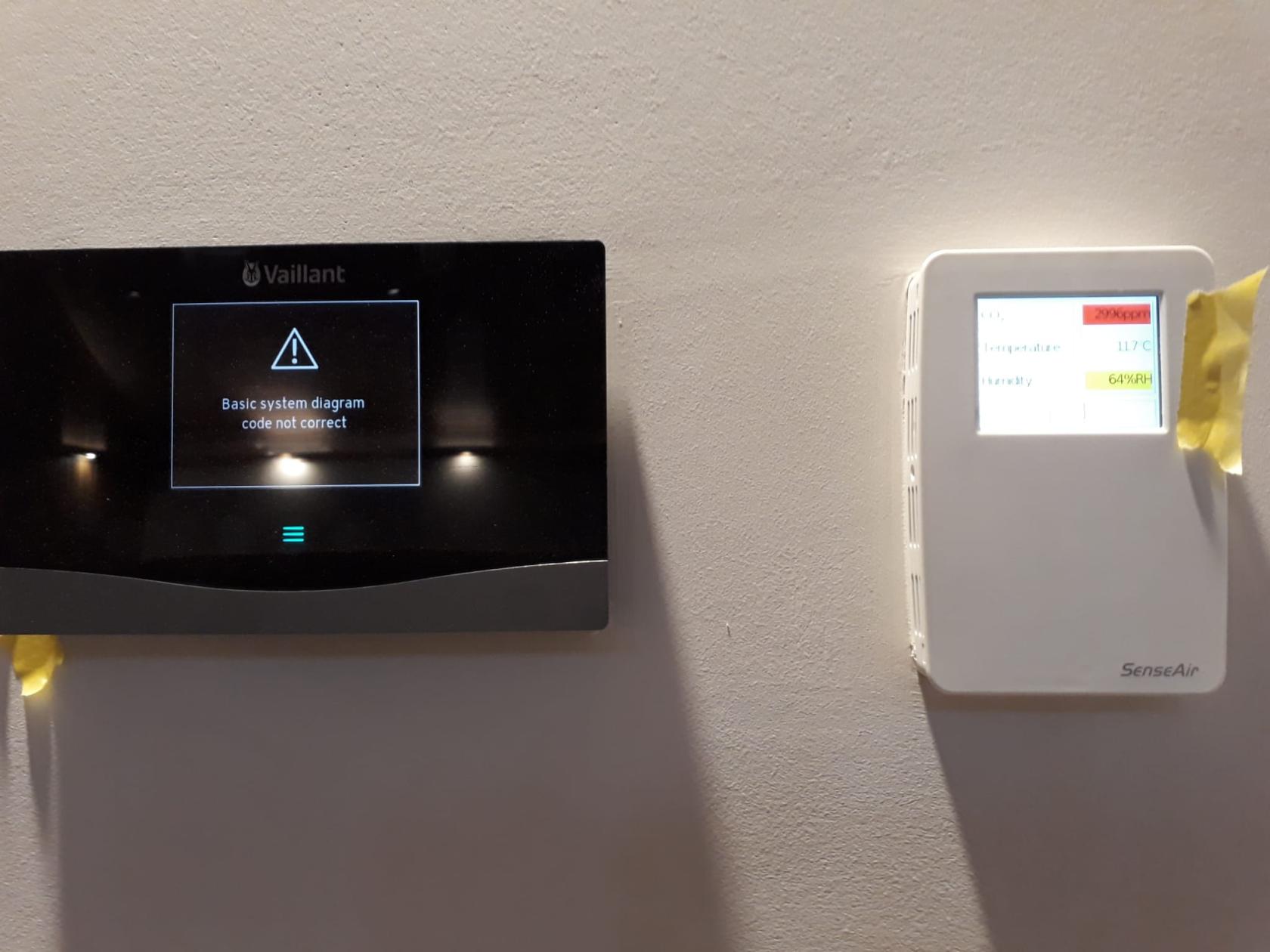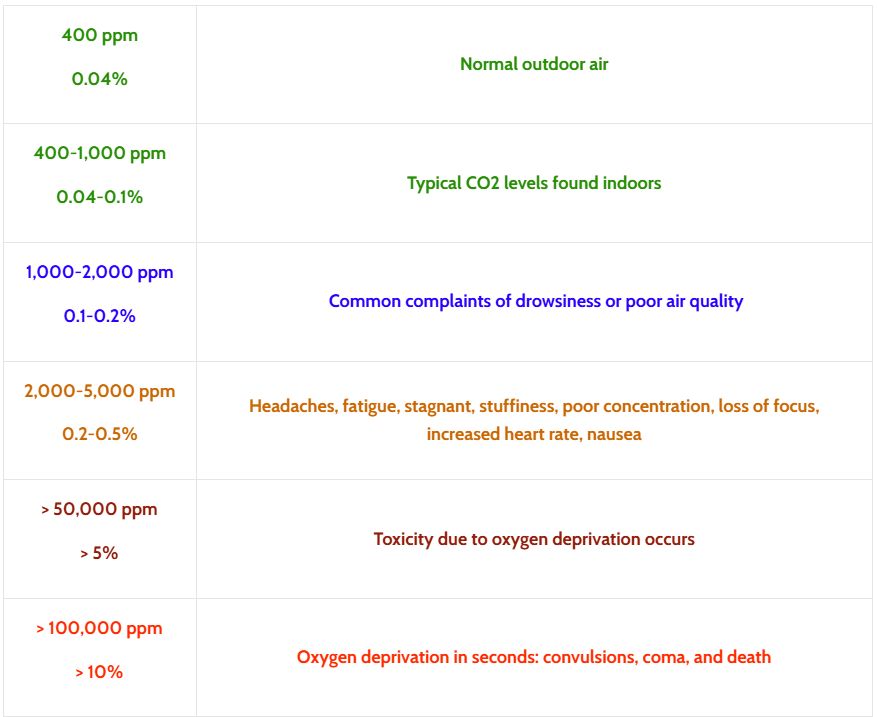CO2 Meter
SenseAir is a high-quality CO2 meter that measures CO2 as well as temperature and relative humidity to monitor the indoor climate. It comes with a power adapter and does not work on batteries.

Why do we measure CO2?
CO2 is often measured in indoor environments to quickly serve as an indication if additional ventilation is required. Because CO2 is a known indoor pollutant, too much CO2 can also affect human performance, productivity, and overall health.
What is an acceptable CO2 level in a room?
Normal CO2 levels in fresh air is approximately 400 ppm (part per million) or 0.04% CO2 in air by volume. The table below shows the effects of increased CO2 levels in an enclosed space.
Temperature and Humidity
- Temperature: Higher temperatures can increase the rate of CO₂ emissions from certain sources and influence ventilation effectiveness.
- Humidity: High humidity levels can affect the performance of ventilation systems and indoor air quality.
Ventilation
- Air Exchange Rates: Higher ventilation rates generally reduce CO₂ levels by increasing the exchange of indoor air with fresh outdoor air.
- Ventilation System Efficiency: The effectiveness of MHVR systems in circulating and filtering air impacts CO₂ levels. Poorly maintained systems can lead to elevated CO₂ concentrations.
Building Structure and Insulation
- Building Tightness: Well-sealed buildings may trap CO₂ indoors, leading to higher concentrations if ventilation is inadequate.
Occupancy
- Number of People: The more people present in a space, the higher the CO₂ levels, as humans exhale CO₂ with every breath.
- Activity Level: Higher activity levels (e.g., exercise or movement) increase CO₂ production per person.


No Comments